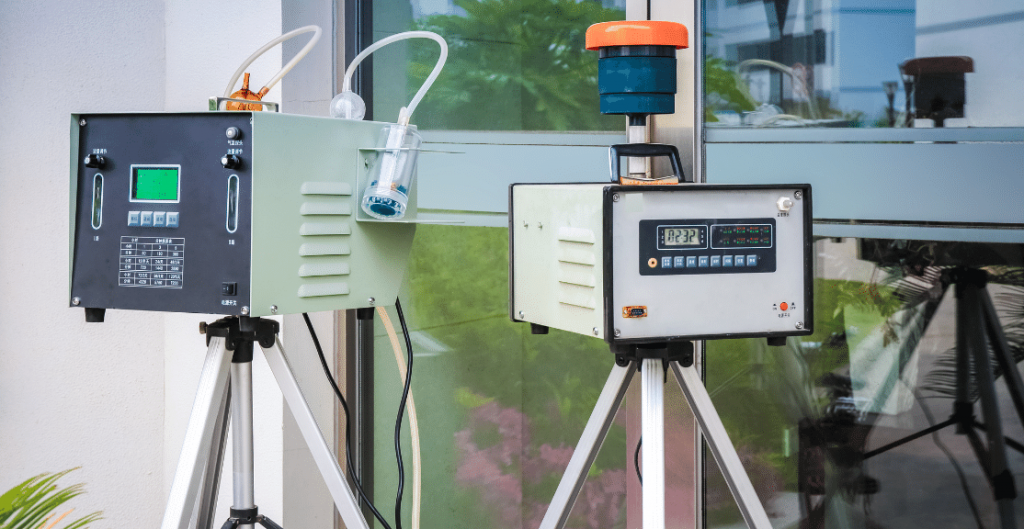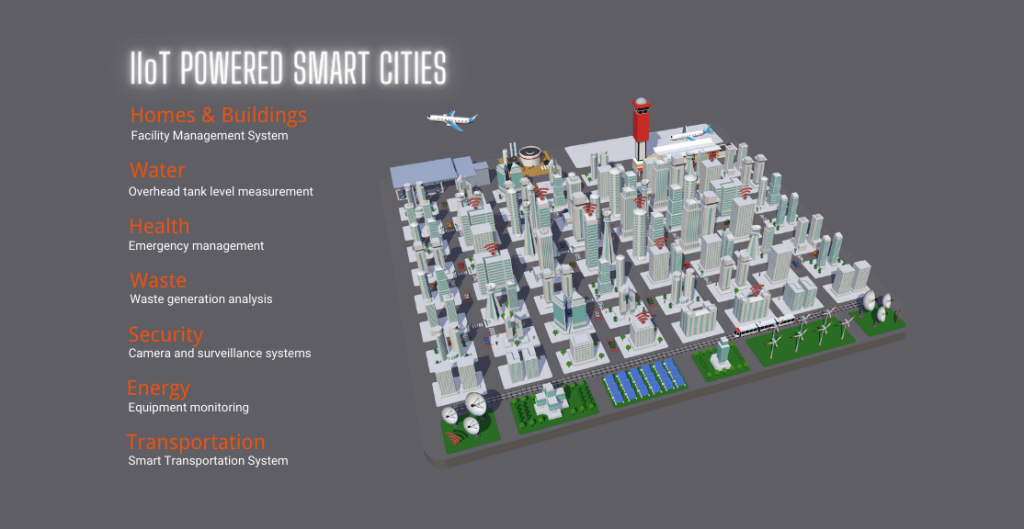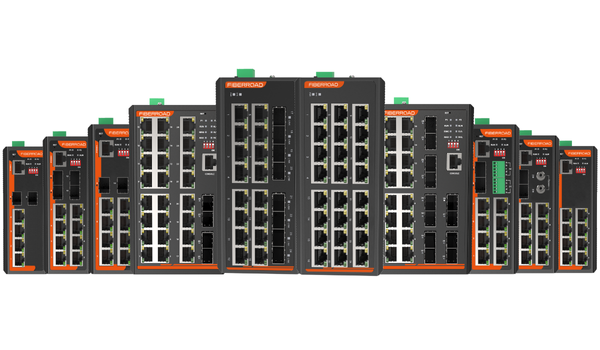

If you are new to the world of networking, you’ll be interested in learning more about industrial network switches. These switches provide high-density Ethernet connectivity and millisecond-level multicast traffic redundancy. They are ideal for critical city infrastructure, transportation, and surveillance applications.
For both smart cities and IIoT, the combination of traditional and innovative communication technologies is crucial. To provide these services, smart objects must communicate and exploit real-time data. The connectivity is provided using a range of technologies and protocols, which are chosen depending on the application requirements.
What Is An Industrial Network Switch?
An Industrial Network Switch also known as Industrial Ethernet Switch is a networking device that supports a wide variety of industries. It focuses on loop design to provide flexible, cost-effective industrial Ethernet communications. These devices have single and multiple rings to meet the unique requirements of different industries.
An industrial network switch allows controlled and targeted transmission of data. An industrial network switch is typically physically located and configured to be positioned optimally. Industrial switches may be unmanaged or managed. Managed Ethernet switches offer multiple redundancy options, including ring topologies and Rapid Spanning Tree Protocol.
What Is Smart City?
A Smart City is a technologically advanced urban area. It utilizes sensors and electronic methods to collect data to manage its resources and assets more efficiently. This data is then used to improve city operations. This type of city will have many applications, including improved traffic management, traffic congestion, and environmental monitoring. To understand how smart cities work, we should examine what makes a city smart. Here are five benefits of smart cities:
An attractive city is a livable city. It attracts businesses and residents alike. By incorporating the Internet of Things into its infrastructure, a Smart City can improve traffic, waste management, transportation, and municipal services. This makes cities more efficient and can save cities money. Smart cities are gaining popularity across the world, with most new projects concentrated in China and the Middle East. Cities in Toronto, Singapore, and Reykjavik are now incorporating digital technologies into their operations.
The concept of a “smart city” is a complex system of interacting systems. These systems need to be transparent and standardized because otherwise, they will become cumbersome and expensive. Some smart city components include high-speed optical and wired networks, sensors, and intelligent transportation systems. Industrial networks can also be organized with a “smart” power grid. And a smart city will help people manage their health and save money.
Why Need To Make The City Smart?
While some cities have embraced smart tech, others have not. Smart cities are not just about streamlining operations and digital interfaces to infrastructure. They focus on people and integrating data to make better decisions for quality of life. This trend can help cities improve their lives and reduce costs while achieving sustainable growth. Here are three reasons why smart cities are the way of the future. They can help improve the quality of life for residents, attract investment, and protect the environment.
Sustainable cities can be energy-efficient. In Barcelona, Spain, for example, smart public lighting vacuums waste from bins into underground storage. Solar panels on waste containers alert city officials to fires or clogs. Smart energy meters reward people who reduce their energy consumption and can help improve public health. Besides being environmentally friendly, smart cities also reduce the risk of crime, wait times for cabs, and walking in the dark.
Smart cities help improve public health access. Devices placed throughout a smart city can monitor a person’s health and send data to a doctor in real-time. These devices can be used to prevent disease, detect potential threats, and provide real-time updates on health conditions. Smart cities also help strengthen communities. They can be used to monitor a neighborhood or specific group of residents. Such a system can help isolate an infected population, making it easier to investigate the source of the infection.
Implementation of a smart city range of applications can reduce fatalities in road traffic and fire by eight to ten percent. That’s enough to save 300 lives a year! Smart cities can also reduce crime by improving response time for emergency services. For example, surveillance cameras installed in stores can monitor activity and provide evidence to responders after a crime has taken place. With smart cities, these benefits can increase our security and our sense of security.
Smart City Applications
Studies have been conducted on the impact of smart city applications on a range of dimensions, from health and environmental quality to social connectedness and civic participation. Smart city applications also impact the economy, jobs, and cost of living. These studies reveal the many benefits of smart city applications. This research shows that the benefits of smart city applications are many, but which ones will have the biggest impact on society? Here are some of the Smart City applications, read on to learn more!
1. Smart Infrastructure
Developing a Smart Infrastructure for Smart City Applications is a key aspect of achieving a truly connected city. This kind of technology collects, processes, and deploys information to ensure the most effective use of limited resources, such as energy and water. Unlike traditional systems, this type of technology allows for automatic adaptation to changing conditions. Smart city infrastructures include smart networks, buildings, public infrastructure, and beaches. Smart networks take into account the behavior of the users connected to them to optimize resource management and minimize losses. A smart high-voltage energy transmission network, for example, better monitors connected devices and achieves efficient distribution.
2. Air Quality Management
Smart cities have become an important tool for tackling air pollution. Air pollution can cause diseases and even cause death. With a bit of technology, smart cities can monitor air quality and even turn specific zones into emission-free zones. These smart city applications can also ban specific sources of air pollution. Read on to learn how this technology can be used in smart cities. Let’s start with a look at some of the most common air quality problems.
Sensor networks and air quality measurement systems that can be used in smart cities are becoming more widely available. Sensors can be installed at street lights, which can be placed high enough to be safe from vandals while low enough to measure the air people are breathing. Smart lights can also be connected directly to hybrid vehicles. When pollution levels are high, the system can automatically switch these vehicles to electric mode. Ultimately, this technology is paving the way for smart cities.

3. Smart Parking
Adding smart parking solutions to cities will not only improve the flow of traffic but will also benefit the real estate, transportation, utilities, and cultural heritage. For example, by identifying which parking spaces are popular, city authorities will be able to create traffic flow patterns and avoid congestion. Moreover, these solutions can help improve the sanitation of hospitals. With all these benefits, smart city parking is a necessary component in the development of smart cities.
4. Traffic Management
A variety of traffic management hardware is used to control road usage. High-performance vehicles collect data such as inventory, geometry, and 360-degree photogrammetry. Traffic management systems also use automatic vehicle counting stations to provide historical and current information on vehicle usage. Various types of data are collected from traffic management hardware to determine where and how traffic is moving, and manage it accordingly. Traffic management systems help to manage traffic flow in the city, and can also help determine the rehabilitation needed for roads.

5. Smart Waste Management
The IIoT-based smart waste management solution uses sensors to monitor trash can motion, fullness, and temperature. In addition, dash cameras can monitor the location and other conditions, enhancing fleet management by flagging scheduled maintenance. The benefits of IoT waste bins are many. Smart waste management solutions use multiple disparate IT elements to reduce operational costs and improve efficiency. The concept of a smart waste management system aims to improve citizen satisfaction by reducing traffic and improving the environment. It does this through optimizing waste detection rates and wireless transmission systems.
Advantages Of The Industrial Network Switch
Among the various advantages of the industrial network switch, are its ability to adapt to a wide temperature environment, its long service life, and its super anti-interference performance. In addition, the switch can be installed on an industrial network without affecting the network’s overall performance. If you’re wondering how this kind of switch can improve your business, then read on. After all, the purpose of this type of switch is to make your data transmission more targeted and controlled.
1. Adapt to Wide Temperature Environment
An Industrial Network Switch must be designed to withstand the toughest conditions. Industrial Ethernet switches need to be robust and withstand wide temperature fluctuations. Unlike a typical Ethernet switch, industrial switches need to withstand heavy vibration and shock. Unlike a typical Ethernet switch, industrial switches must be able to withstand temperature changes.
2. Long Service Life
While business information technology switches are ideal for data center applications, industrial switches are built for environments with harsher conditions. They typically feature an IP40 protection rating and are approved for hazardous locations. Compared to ordinary Ethernet switches, industrial switches are durable, withstand extreme temperature variations and electrical noise, and can be installed in the harshest environments. Here’s how to determine if an industrial Ethernet switch is a right choice for your project.
An industrial switch is built to endure harsh conditions and keep up with your network needs for many years. Because downtime costs a lot in the industrial environment, an industrial Ethernet switch is built to last a long time. This durability is particularly useful in remote locations, where IT staff may not be available to repair components. This means that industrial Ethernet switches can last up to 10 years or more. A business IT switch can only provide a 1.5-3-year lifespan, while an industrial Ethernet switch can provide dependable connectivity for years.
3. Super Anti-interference Performance
The industrial switches are specially designed to withstand a variety of conditions, including high temperatures, heavy dust, and harsh environmental conditions. Because of their high component requirements, these switches are often built in rugged metal casings for increased physical strength and protection. The IP30-rated covers protect unused Ethernet ports. Moreover, these switches can mount on a 35mm DIN rail. Additionally, they have options for mounting the back panel.
The Industrial Ethernet Switch has been developed to meet the needs of flexible industrial applications. The switch can provide a cost-effective industrial Ethernet communications solution. Its design focuses on loop design, which can be either single-ring or multi-ring.
4. Fast Ring Network
This type of network allows data to be transmitted quickly and reliably between different workstations. Because the devices in the network are interconnected, this type of network can support numerous workstations, and it is also adaptable and flexible enough to accommodate new devices. Compared to star topologies, a ring network can handle more devices in a smaller space.
This type of network is based on Media Redundancy Protocol, a standards-based protocol that guarantees a fast failover. Using this method, each switch has a redundant connection to the network. This design also allows for a simpler and more cost-efficient cabling infrastructure. A Fast Ring Network is a good option for industrial environments, where a single point can disrupt production.
5. Noise Reduction
Industrial Ethernet switches support both twisted-wire and fiber-optic cabling. Twisted-wire cabling is sufficient for short distances, but in many industrial settings, fiber-optic cabling offers more flexibility and range. In noisy environments, electrical noise can disrupt network connectivity. This is why industrial ethernet switches help to dampen noise and improve network connectivity. In addition to noise reduction, industrial ethernet switches also feature a wider bandwidth.
Unlike standard PoE switches, industrial PoE switches feature redundant power inputs. Unlike standard switches, industrial PoE switches can form redundant networks with minimal downtime due to environmental issues. They feature fast self-healing times, enabling them to recover from failed data pathways in less than 50 milliseconds. Moreover, industrial PoE switches provide robust security, allowing a network to function even when the power source goes down. Moreover, the switches are equipped with a robust firewall that protects data.

Final Thought
Implementation will be key, but the true benefits of the IIoT will be found when systems from multiple domains are integrated. Imagine a smart city that includes dozens of normally siloed departments. For instance, a public hospital uses both solar and wind power, as well as diesel generators. An IIoT system might manage energy loads and power generators. It may also integrate with a building automation system.
To deploy IIoT solutions, cities must be able to manage the massive volumes of data they generate. As cities contain large infrastructure networks, the IIoT is an ideal candidate for this approach. By deploying smart city solutions, these projects connect the cities and add intelligence to the system. The challenges, however, are often more daunting than the opportunities. In this article, we will look at some of the challenges in deploying the IIoT and how it can help cities.






